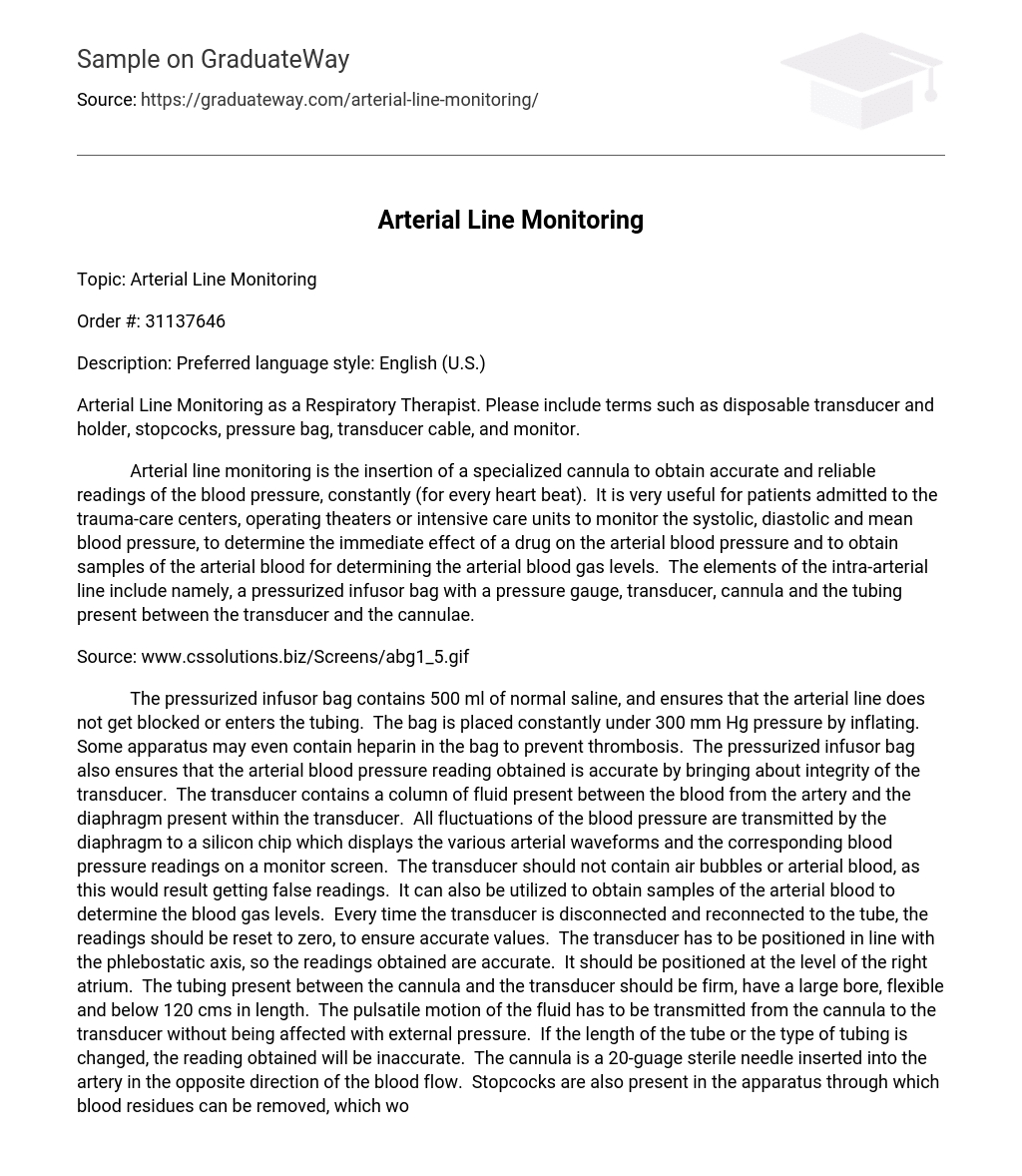Arterial line monitoring is the insertion of a specialized cannula to obtain accurate and reliable readings of the blood pressure, constantly (for every heart beat). It is very useful for patients admitted to the trauma-care centers, operating theaters or intensive care units to monitor the systolic, diastolic and mean blood pressure, to determine the immediate effect of a drug on the arterial blood pressure and to obtain samples of the arterial blood for determining the arterial blood gas levels. The elements of the intra-arterial line include namely, a pressurized infusor bag with a pressure gauge, transducer, cannula and the tubing present between the transducer and the cannulae.
The pressurized infusor bag contains 500 ml of normal saline, and ensures that the arterial line does not get blocked or enters the tubing. The bag is placed constantly under 300 mm Hg pressure by inflating. Some apparatus may even contain heparin in the bag to prevent thrombosis.
The pressurized infusor bag also ensures that the arterial blood pressure reading obtained is accurate by bringing about integrity of the transducer. The transducer contains a column of fluid present between the blood from the artery and the diaphragm present within the transducer. All fluctuations of the blood pressure are transmitted by the diaphragm to a silicon chip which displays the various arterial waveforms and the corresponding blood pressure readings on a monitor screen.
The transducer should not contain air bubbles or arterial blood, as this would result getting false readings. It can also be utilized to obtain samples of the arterial blood to determine the blood gas levels. Every time the transducer is disconnected and reconnected to the tube, the readings should be reset to zero, to ensure accurate values. The transducer has to be positioned in line with the phlebostatic axis, so the readings obtained are accurate. It should be positioned at the level of the right atrium.
The tubing present between the cannula and the transducer should be firm, have a large bore, flexible and below 120 cms in length. The pulsatile motion of the fluid has to be transmitted from the cannula to the transducer without being affected with external pressure. If the length of the tube or the type of tubing is changed, the reading obtained will be inaccurate.
The cannula is a 20-guage sterile needle inserted into the artery in the opposite direction of the blood flow. Stopcocks are also present in the apparatus through which blood residues can be removed, which would otherwise encourage bacterial growth. The monitor produces arterial waveforms of the blood pressure readings which have to be interpreted.
References
- Nurse Bob (2000). Hemodynamic Monitoring Arterial Pressure Monitoring. Retrieved January 20, 2007, Tripod Web site: http://rnbob.tripod.com/artmon.htm
- Nurse Bob (2005). Hemodynamics in Critical Care Arterial Line (Art. Line). Retrieved January 20, 2007, Tripod Web site: http://rnbob.tripod.com/aline.htm
- Turner K. (2007). Arterial Blood Pressure Monitoring: An Introduction. Retrieved January 20, 2007, CIAP Web site: http://www.ciap.health.nsw.gov.au/hospolic/stvincents/stvin99/Karen2.htm





